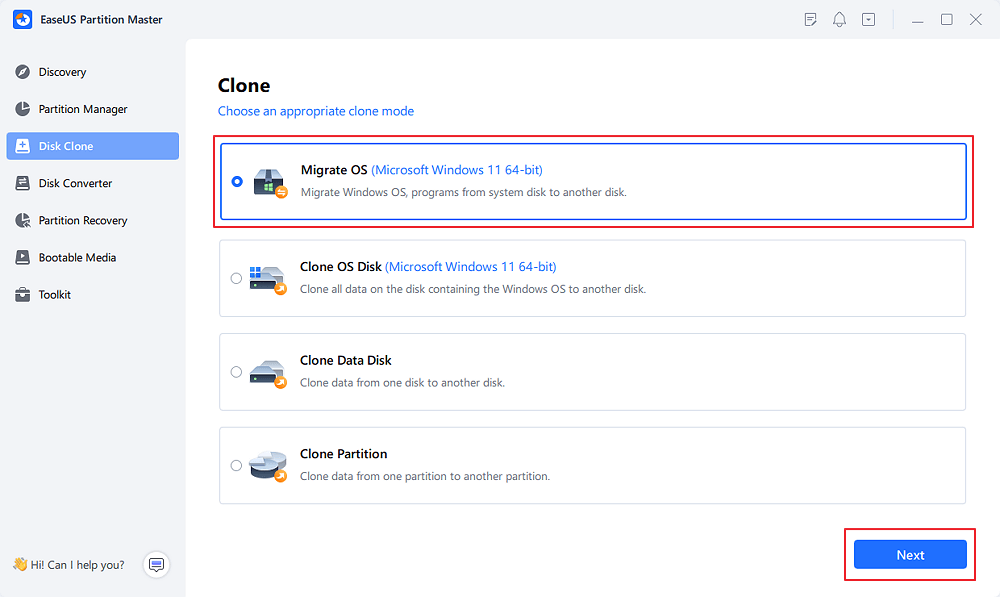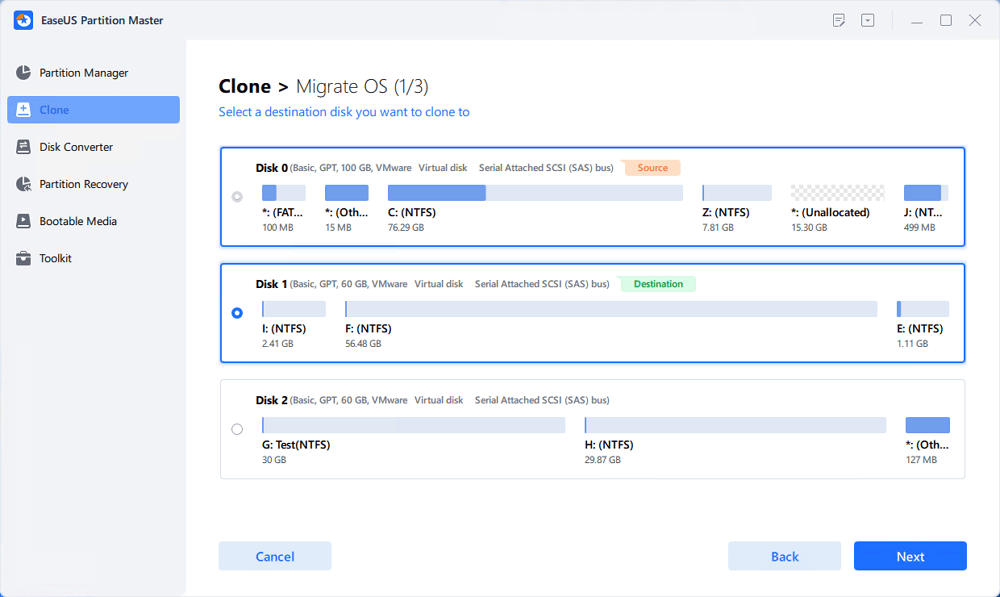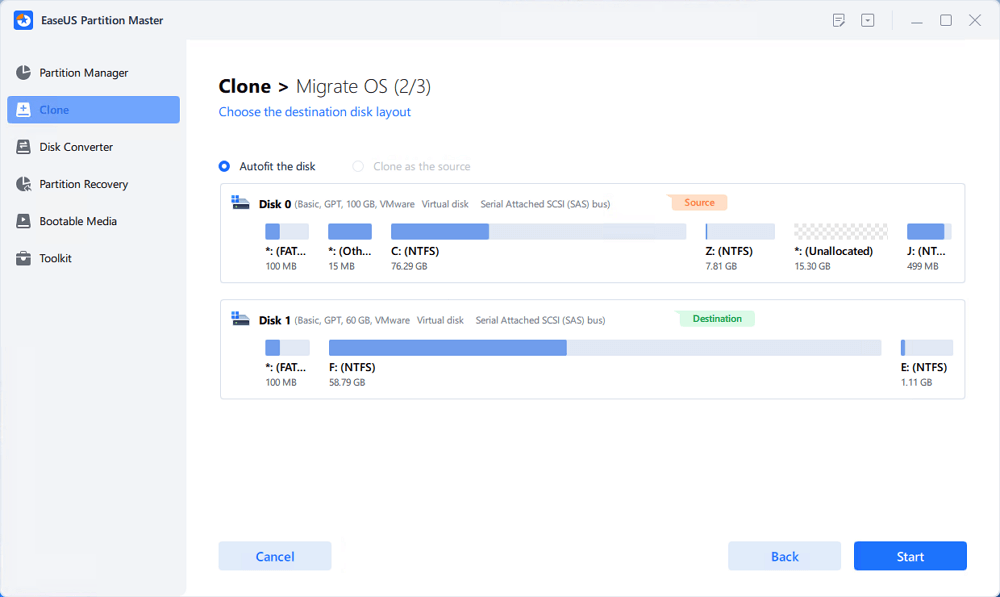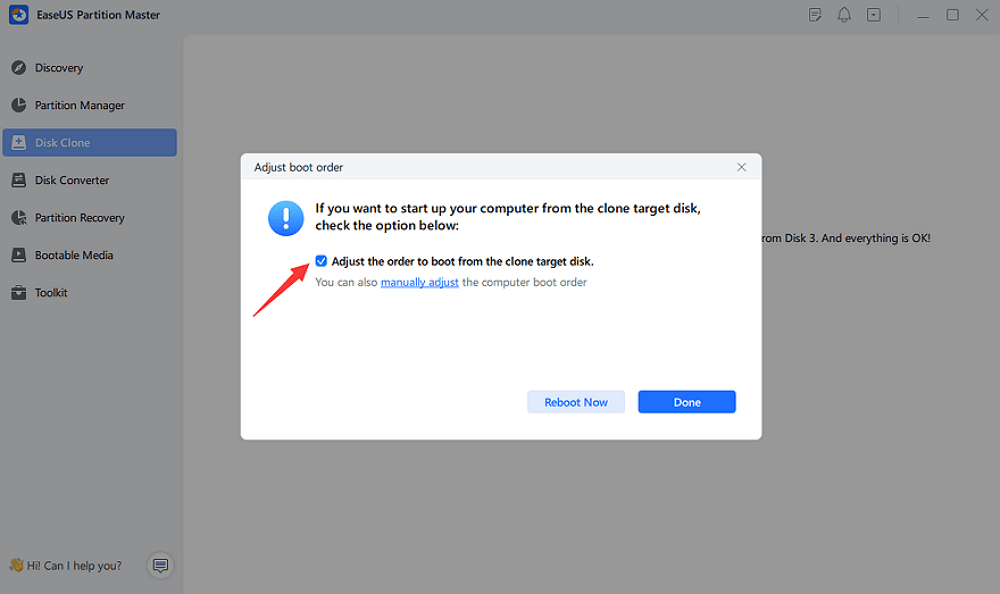Start Your Free Trial!
Sign up to our newsletter, stay updated on news and exclusive offers from EaseUS. Don't worry, if you change your mind, you can unsubscribe at any time, free of charge. We value your privacy (Privacy Policy).
Page Table of Contents
How to Migrate Windows to New NVMe - 3 Working SolutionsHOT
ConclusionHOT
FAQs About How to Migrate Windows to New NVMeHOT
About the Author
Hot Topics
Updated on Mar 29, 2025
Migrating your Windows to an NVMe drive can significantly enhance your system's performance and hence is beneficial for users who want faster boot-up time, access time to data and efficient functioning in general. However, migrating an entire window system, including all the files, settings, and applications users have on their computer, may seem almost stressful. But to address this problem, we have put together this detailed guide for you to follow.
In this guide, you will learn how to clone Windows to a new NVMe drive using three effective methods. All solutions provide detailed, illustrated guide to assist you in moving your data over so that you can take full advantage of NVMe without the inconvenience. EaseUS will guide you through the process of migrating Windows safely and effectively to your new NVMe drive.
There are various ways to migrate Windows to a new NVMe disk, all with advantages and simplicity of use. In this section, we will discuss three efficient ways to move your Windows system, starting with the most user-friendly and dependable choice.
EaseUS Partition Master Professional makes migrating Windows to an NVMe SSD easy. A disk management-specific tool simplifies and speeds up migration. Users can save time and avoid data loss by transferring their operating system, files, settings, and apps directly to the NVMe drive with EaseUS Partition Master.
For users unfamiliar with complex configurations, EaseUS Partition Master is faster and safer than manual transfer. Unlike typical cloning tools, it provides precise disk resizing during migration to optimise NVMe space. Here are the steps:
1. Launch EaseUS Partition Master, go to the Clone section, click "Migrate OS" and click "Next" to continue.

2. Select the target SSD you want to migrate Windows OS to, and click "Next".

3. Click "Yes" to confirm the you want to exceute the operation.
4. Click "Start" to start migrating your OS to the new SSD.

5. When the process completes, you'll see a confirming message, asking "if you want to start up computer from the clone target disk".
Tick "Adjust the order to boot from the clone target disk" and click the respective button through your demands.

In addition to OS migration, EaseUS Partition Master offers several other features that can help streamline the migration process and enhance your system management, such as:
Users who want to upgrade to an NVMe disk will find EaseUS Partition Master a dependable option with its simple UI and robust feature set. EaseUS Partition Master is especially advised if you want a quick, easy tool to manage your Windows transfer.
Command-prompt migration is also an efficient and versatile approach for people who have expertise with command-line operations. Advanced users who prefer greater control will find this method appropriate. This method allows you directly manage the migration process. To prevent mistakes that can compromise the integrity of your data, follow the given steps precisely.
Step 1. Press Win + X and select Command Prompt (Admin) or Windows PowerShell (Admin). This will allow access to system-level commands for the migration.
Step 2. Type wbadmin start backup -backupTarget:D: -include:C: -allCritical and press Enter.Replace “D:” with the drive letter to create a full system image of your Windows installation.
Step 3. Launch the disk management tool to prepare the NVMe drive.
Step 4. In Command Prompt, type diskpart and press Enter to open the disk partition tool. Use list disk to view all disks, then find and select the NVMe drive with the required disk

Step 5. Type clean to remove existing partitions, then convert GPT to prepare the NVMe for installation in GPT format.
Step 6. Restore the system image to the NVMe Drive. Type: wbadmin start recovery -version:MM/DD/YYYY-HH:MM -item Type: Volume -items:C: -recoveryTarget:X: (adjust date/time and target drive).
Step 7. Restart, enter BIOS, and set the NVMe as the primary boot device. Boot from NVMe and ensure all data and settings are transferred correctly
Ensure that Windows works smoothly and confirm that all data and settings have been transferred successfully once your system starts from the NVMe disk. You can format your old disk now if you want to use it for extra storage.
You can also use Windows' built-in Backup and Restore utility to move Windows to your new NVMe disk. This technique makes use of Windows' built-in system backup capabilities to produce a complete system image and transfer it to your new drive. Here's how:
Step 1. Go to "Control Panel" > "Backup and Restore," then select Create a system image on the left.

Step 2. Select a drive with enough space to store the backup, then click Next.
Step 3. Ensure C: or your Windows drive is selected for backup, then confirm by clicking Start Backup.
Step 4. Use Disk Management to format and set up your NVMe drive if it's not already configured.
Step 5. Boot from a Windows installation disk or recovery drive, select Repair your computer, then Restore from a system image to transfer the backup onto the NVMe drive.
Restart, enter BIOS, and change the boot drive in BIOS, ensuring the system boots from the new NVMe. The built-in Backup and Restore option has proven to be simple and dependable for users who want Windows' native tools for transferring their OS to a new NVMe disk.
Do the three solutions solve your problem? If it works, share the article to help more people.
Converting any Window into a new NVMe drive may sound difficult, but it is possible if the right tools and methods are employed. In this article, we've explored three reliable solutions: EaseUS Partition Master, Command Prompt, and Windows Backup & Restore. Each method presented here provides varying degrees of difficulty, from the most straightforward EaseUS Partition Master to the radical use of Command Prompt.
In this article, we have focused on the most reliable methods, but the main aim is to migrate Windows properly to the new NVMe drive and ensure that it boots correctly. Among all the four options, EaseUS Partition Master is the most efficient and easiest for most users. It makes migration easy, has a simple wizard-like layout, and includes more useful features for partitions and data.
If you need easy and safe software to copy Windows to a new NVMe drive, EaseUS Partition Master is worth a try. Not only will it help you avoid any potential migration issues, but it will also make your overall drive management experience positive.
Here are the solutions to your Windows NVMe drive migration questions. Our most frequently asked questions can help you through the process.
1. How do I migrate Windows to New M.2?
Built-in Windows Backup and Restore makes migrating Windows to an M.2 drive easy. Create a whole system image and restore it to the new M.2 drive with this utility. Here are the steps for you to follow:
2. How do I get my computer to recognize my new NVMe SSD?
Your computer may not always identify a new NVMe SSD right away. Make sure that the SSD is correctly coupled to the motherboard and that the required drivers are fitted to fix this.
3. Is it better to install OS on NVMe or SSD?
Usually, installing NVMe is a better choice, as your computer may not always identify a new NVMe SSD right away. Make sure that the SSD is correctly coupled to the motherboard and that the required drivers are fitted to fix this.
How Can We Help You
Cici is the junior editor of the writing team of EaseUS. She accepted the systematic training on computers at EaseUS for over one year. Now, she wrote a lot of professional articles to help people resolve the issues of hard drive corruption, computer boot errors, and disk partition problems.
It won't hot image your drives or align them, but since it's coupled with a partition manager, it allows you do perform many tasks at once, instead of just cloning drives. You can move partitions around, resize them, defragment, and more, along with the other tools you'd expect from a cloning tool.
Read MoreI love that the changes you make with EaseUS Partition Master Free aren't immediately applied to the disks. It makes it way easier to play out what will happen after you've made all the changes. I also think the overall look and feel of EaseUS Partition Master Free makes whatever you're doing with your computer's partitions easy.
Read MorePartition Master Free can Resize, Move, Merge, Migrate, and Copy disks or partitions; convert to local, change label, defragment, check and explore partition; and much more. A premium upgrade adds free tech support and the ability to resize dynamic volumes.
Read MoreIt won't hot image your drives or align them, but since it's coupled with a partition manager, it allows you do perform many tasks at once, instead of just cloning drives. You can move partitions around, resize them, defragment, and more, along with the other tools you'd expect from a cloning tool.
Read MoreI love that the changes you make with EaseUS Partition Master Free aren't immediately applied to the disks. It makes it way easier to play out what will happen after you've made all the changes. I also think the overall look and feel of EaseUS Partition Master Free makes whatever you're doing with your computer's partitions easy.
Read MoreRelated Articles
Bypass Password on HP Laptop Windows 10 [5 Easy Ways]
![]() Oliver/2025/01/23
Oliver/2025/01/23
Windows 11 24H2 Requires SSD? - How Can You Upgrade
![]() Oliver/2025/03/29
Oliver/2025/03/29
2025 Magic Western Digital (WD) Partition Manager Software Free Download
![]() Daisy/2025/03/29
Daisy/2025/03/29
How to Make C Drive Bigger Windows 7/10| Assigning More Space to C Drive
![]() Daisy/2025/03/29
Daisy/2025/03/29
EaseUS Partition Master

Manage partitions and optimize disks efficiently
Your best companion for disk partitioning, MBR to GPT/GPT to MBR conversion,even OS migration
CHOOSE YOUR REGION
Start Your Free Trial!
Sign up to our newsletter, stay updated on news and exclusive offers from EaseUS. Don't worry, if you change your mind, you can unsubscribe at any time, free of charge. We value your privacy (Privacy Policy).